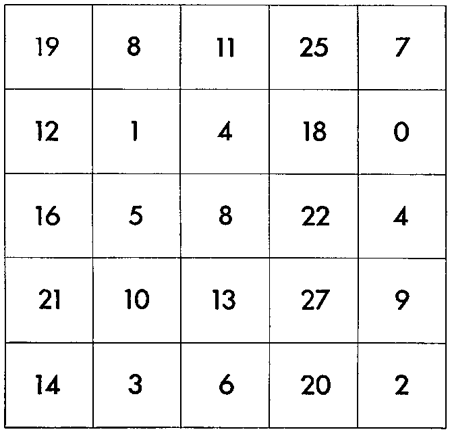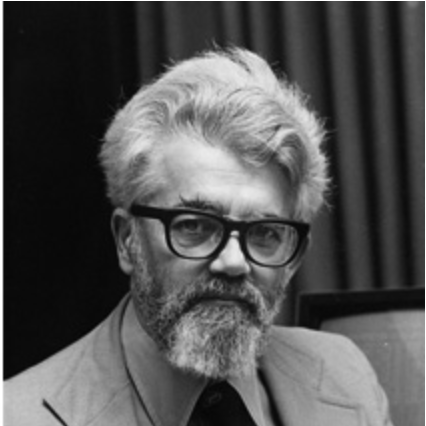ABC and FLT
by Brian Hayes
Published 10 September 2016
This weekend I’ll be attending a workshop at the University of Vermont, “Kummer Classes and Anabelian Geometry: An introduction to concepts involved in Mochizuki’s work on the ABC conjecture, intended for non-experts.” It was the last phrase in this title that gave me the courage to sign up for the meeting, but I have no illusions. There are degrees of non-expertness, and mine is really quite advanced. The best I can hope for is to go home a little less ignorant than I arrived.
I’m glad to be here all the same. The ABC conjecture is one of those beguiling artifacts in number theory that seem utterly simple one moment and utterly baffling the next. As for Shinichi Mochizuki’s 500-page treatise on the conjecture, that’s baffling from start to finish, and not just for me. Four years after the manuscript was released, it remains a proof-on-probation because even the non-non-experts have yet to fully digest it. The workshop here in Burlington is part of the community’s digestive effort. I’m grateful for an opportunity to see the process at work, and naturally I’m curious about the eventual outcome. Will we finally have a proof, or will a gap be discovered? Or, as has happened in other sad cases, will the question remain unresolved? For me the best result will be not just a proof certified by a committee of experts but a proof I can understand, at least in outline, if I make the effort—a proof I might be able to explain to a broader audience.
The drive up to Burlington gave me a few hours of solitude to think about the conjecture and how it fits in with more familiar ideas in number theory. One notable connection is summed up as “ABC implies FLT.” Proving the ABC conjecture will bring us a new proof of Fermat’s Last Theorem, independent of the celebrated Andrew Wiles–Richard Taylor proof published 20 years ago. Interesting. But how are the two problems linked? As I cruised through the chlorophyll-soaked hills of the Green Mountain state, I noodled away at this question.
[Correction: ABC actually implies only that FLT has no more than a finite number of counterexamples, and only for exponent \(n \ge 4.\)]
I have written about the ABC conjecture twice before (2007 and 2012). Here’s a third attempt to explain what it’s all about.
The basic ingredients are three distinct positive integers, \(a\), \(b\), and \(c\), that satisfy the equation \(a + b = c\). Given this statement alone, the problem is so simple it’s silly. Even I can solve that equation. Pick any \(a\) and \(b\) you please, and I’ll give you the value of \(c\).
To make the exercise worth bothering with, we need to put some constraints on the values of \(a\), \(b\), and \(c\). One such constraint is that the three integers should have no factors in common. In other words they are relatively prime, or in still other words their greatest common divisor is 1. Excluding common factors doesn’t really make it any harder to find solutions to the equation, but it eliminates redundant solutions. Suppose that \(a\), \(b\), and \(c\) are all multiples of 7; then dividing out this common factor yields a set of smaller integers that also satisfy the equation: \(a\,/\,7 + b\,/\,7 = c\,/\,7\).
The ABC conjecture imposes a further constraint, and this is where the arithmetic finally gets interesting. We are to restrict our attention to triples of distinct positive integers that pass a certain test. First we find the prime factors of \(a\), \(b\), and \(c\), and cast out any duplicates. For example, given the triple \(a = 4, b = 45, c = 49\), the prime factors are \(2, 2, 3, 3, 5, 7, 7\); eliminating duplicates leaves us with the set \(\{2, 3, 5, 7\}\). Now we multiply all the distinct primes in the set, and call the product the radical, \(R\), of \(abc\). Here’s the punchline: The solution is admissible—it is an “\(abc\)-hit”—only if \(R \lt c\). For the example of \(a = 4, b = 45, c = 49\), this condition is not met: \(2 \times 3 \times 5 \times 7 = 210\), which of course is not less than 49.
The ABC conjecture holds that \(abc\)-hits are rare, in some special sense. Hits do exist; try working out the radical of \(a = 5, b = 27, c = 32\) to see an example. In fact, there are infinitely many \(abc\)-hits, with constructive algorithms for generating endless sequences of them. Yet, it’s part of the maddening charm of modern mathematics that objects can be both infinitely abundant and vanishingly rare at the same time. The particular kind of rareness at issue here says that \(R\) can be less than \(c\), but seldom by very much. As a measure of how much, define the power \(P\) of an \(abc\)-hit as \(\log(c) \,/\, \log(R)\). Then one version of the ABC conjecture states that there are only finitely many \(abc\)-hits with \(P \gt (1 + \epsilon)\) for any \(\epsilon \gt 0\).
On first acquaintance, all this rigmarole about radicals seems arbitrary and baroque. Who came up with that, and why? The answer to the who question is Joseph Oesterlé of the University of Paris and David W. Masser of the University of Basel, in 1985. If you play around long enough with integers and their prime factors, you can find all sorts of curious relations, so what’s so special about this one? Whether or not the conjecture is true—and whether or not it’s provable—why should we care?
As I tooled along the Interstate, I tried to answer this question to my own satisfaction. I made a little progress by thinking about what kinds of numbers we might expect to produce \(abc\)-hits. Are they big or small, nearly equal or of very different magnitudes? Are they primes or composites? Do we find squares or other perfect powers among them?
Primes are always a good place to start. Can we have an \(abc\)-hit with \(a\), \(b\), and \(c\) all prime? One complication is that either \(a\) or \(b\) will have to be equal to 2, because 2 is the only even prime, and we can’t have \(a + b = c\) with all three numbers odd. But that’s all right; there are still lots of triples (and conjecturally infinitely many) of the form \(2 + b = c\) with \(b\) and \(c\) prime; they are called twin primes. However, none of them are \(abc\)-hits. It’s easy to see why: If \(a\), \(b\), and \(c\) are all prime, then their radical is simply the product \(abc\), which for numbers larger than 1 is always going to be greater than \(a + b\).
We can extend this reasoning from the primes to all squarefree numbers, that is, numbers that have no repeated prime factors. (They are called squarefree because they are not divisible by any square.) For example, \(10, 21,\) and \(31\) form a squarefree \(abc\) triple, with prime factorizations \(2 \times 5\), \(3 \times 7\), and \(31\). But they do not produce an \(abc\)-hit, because their radical \(2 \times 3 \times 5 \times 7 \times 31 = 6510\) is clearly larger than \(a + b = c = 31\). And the same argument that rules out all-prime \(abc\)-hits applies here to exclude all-squarefree hits.
These results suggest that we look in the opposite direction, at squarefull numbers—and even cubefull numbers, and so on. We want lots of repeated factors. This strategy immediately pays off in the search for \(abc\)-hits. It maximizes the sum \(a + b = c\) without overly enlarging the radical—the product of the distinct primes. The very first of all \(abc\)-hits (in any reasonable ordering) offers an example. It is \(1 + 8 = 9\), or in factored form \(1 + 2^3 = 3^2\). This is a high-power hit, with \(\log(9) \,/\, \log(6) = 1.23\). The triple with highest known power is \(2 + (3^{10} \times 109) = 23^5\), yielding \(\log(6436342) \,/\, \log(15042) = 1.63.\)
Let’s look more closely at that first \(abc\)-hit, \(1 + 8 = 9\). Note that 8 and 9 are not just squarefull numbers; they are perfect powers. This triple is the subject of another famous conjecture. Eugène Catalan asked if \(8\) and \(9\) are the only consecutive perfect powers. Preda Mihailescu answered affirmatively in 2002. Thus we know that the equation \(1 + x^m = y^n\) has only this single solution. However, if we relax the rules just a little bit, we can find solutions to \(a + x^m = y^n\) where \(a\) has some value greater than 1. For example, there’s 3 + 125 = 128 (or 3 + 5^3 = 2^7), which is another high-power \(abc\)-hit.
Suppose we tighten the rules instead of relaxing them and ask for solutions to \(x^n + y^n = z^n\), where the three members of the triple are all nth powers of integers. If we could find solutions of this equation with large values of n, they would surely be a rich ore for high-power \(abc\)-hits. But alas, that’s the equation that Fermat’s Last Theorem tells us has no solutions in integers for \(n \gt 2\). The ABC conjecture turns this implication on its head. It says (if it can be proved) that the rarity of \(abc\)-hits implies there are no solutions to the Fermat equation.
That’s as far as I was able to get while musing behind the wheel—a vague intuition about the balance between addition and multiplication, a tradeoff between increasing the sum and reducing the radical, a hint of a connection between ABC and FLT. Not much, but a better sense of why it’s worth focusing some attention on this particular relation among numbers.
Now morning breaks over Burlington. Time to go learn something from those who are less non-expert.
Responses from readers:
Please note: The bit-player website is no longer equipped to accept and publish comments from readers, but the author is still eager to hear from you. Send comments, criticism, compliments, or corrections to brian@bit-player.org.
Publication history
First publication: 10 September 2016
Converted to Eleventy framework: 22 April 2025




Hi Brian - a typo: the radical of 1+8=9 is 6, not 8. As you say, the power is then log 9 / log 6 = 1.23.
Ooops. Thanks, Cris.
But luckily exponent 3 was proved by Euler and possibly even Fermat, though he didn’t say so explicitly, he just set it as a challenge to others in letters.
Brian,
Looking forward to your report on the workshop.